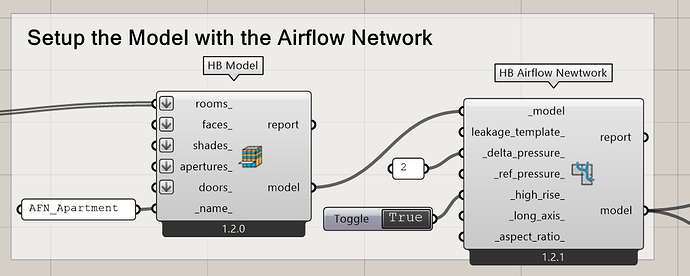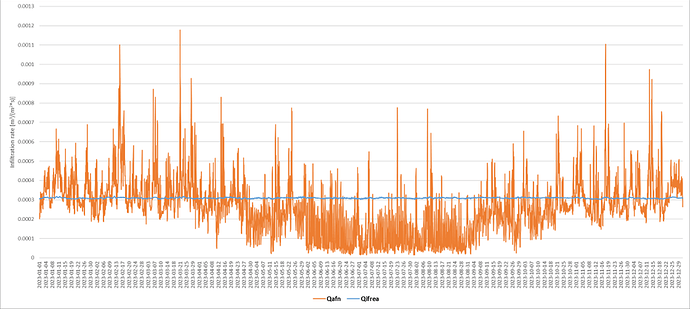Hi all,
It is fantastic to see Honeybee support the Airflow Network, I really appreciate the amount of effort that has gone into this feature - big thanks @SaeranVasanthakumar and @chris for this.
As I am looking to replace/upgrade our current workflows, I have a couple of questions to make sure we use it correctly.
1.) Infiltration modelling: I have seen HB creates an AFN Surface and Surface crack object for each external surface, and that the crack properties are reverse-engineered following this to meet the infiltration value specified with HB Loads (assuming no leakage template is selected).
I have made a couple of tests, and the results of AFN Zone Infiltration Air Change rate doesn’t seem to align with the input in HB Loads. Is there something I’m missing?
This would help a long way when we model for code/standard compliance where the infiltration value is specified. Currently, we have to iterate over Air mass flow coefficient values, until the average infiltration over a certain period of time matches the Code requirements - which is time consuming.
2.) Opening factors for windows: I have noticed that window opening is controlled with the EMS, while all the settings in the AFN are left as NoVent. The EMS sets the opening factors to 0.5 when indoor temperature is above the setpoint.
Is there any specific reason for this not to be Opening factor 1?
It would be great to understand the logic behind, just to make sure we don’t misuse the AFN.
Rafael




